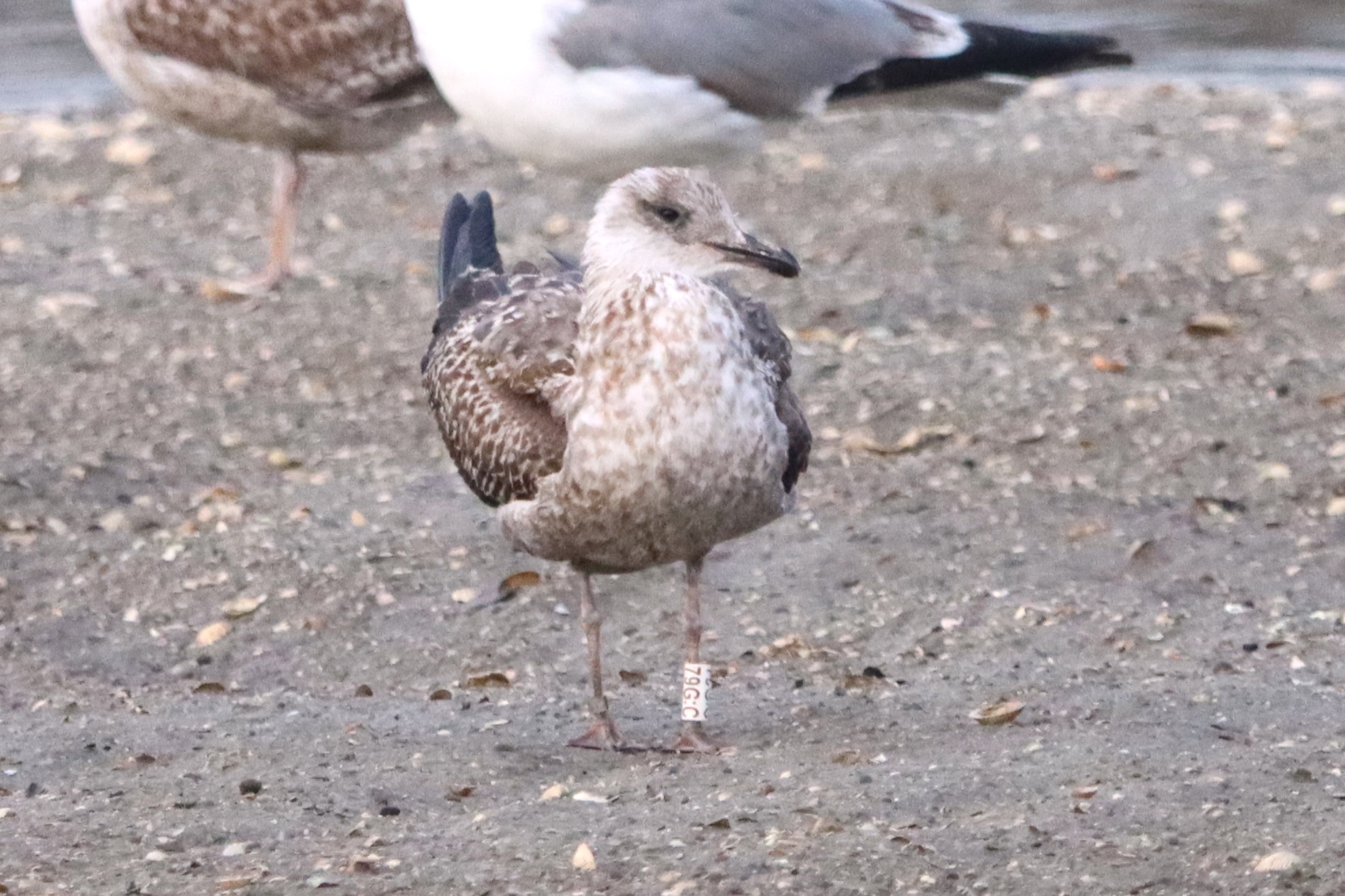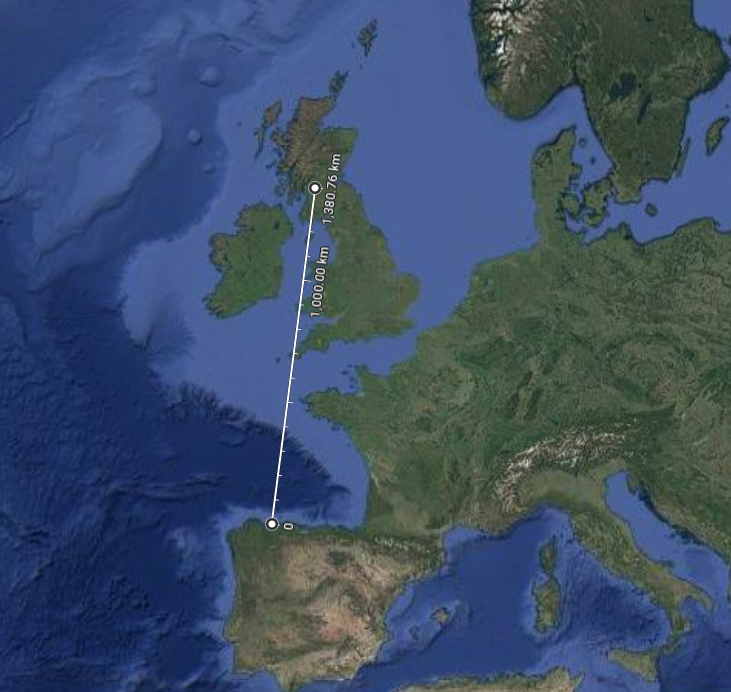Through our Scottish gull trial and our urban gull research site I had access to lots of gull chicks and I decided to ask the local bird ringing group (Clyde Ringing Group) to come and darvic ring the chicks on the roof. Darvic rings are the large coloured rings with a unique code printed on them so people can easily read and report sightings of the gulls. I wanted this to happen so we could see where our chicks end up and go to in their lifetime. All four of the cases below are Lesser Black-backed Gulls, a species which breeds and rear their chicks in Scotland but then migrates to…… I won’t say just yet so as not to ruin the surprise.
So here is the brief story of four different gulls that we have ringed on our sites, two from the Scottish Gull Trial in 2021 and two others from our urban research colony in Glasgow. I’ll start with the two pioneers from back in 2021, gulls 61Y:C and 62Z:C from the trial.
Gull 61Y:C
This was a gull brought in by myself to the Scottish Gull Trial as an egg in 2021. The egg was incubated, hatched and the chick hand reared by the professional staff at Hessilhead Wildlife Rescue Centre (never try to hand rear wild birds, always leave it to the professionals). They hatched on 23rd May 2021 and were hand reared at the centre until their release in the Troon area on the 14th July 2021. Later on in the year on the 3rd November 61Y:C was seen for the first time since their release some 1,626 km (1,010 miles) away in Porto, Portugal. They were then seen again in Porto on 12th September 2022 and the 31st October 2022. It’s great to see them doing so well in the wild and they clearly are enjoying their stay in Portugal.

Gull 62Z:C

They were also brought in as an egg under license during the Scottish Gull Trial 2021. Having arrived at Hessilhead Wildlife Rescue Centre as an egg they eventually hatched just four days after 61Y:C on the 27th May 2021. Then they were hand reared and ringed at the rescue centre, all set for their release alongside 61Y:C on the 14th July 2021. 62Z:C was seen two months later, again in Troon. However, their next sighting on the 4th February 2023 was astonishing as they were seen in Essaouira, Mauritania in Africa! This came in at a staggering 2,700km (1,677 miles) from their release site in Troon. They then completed their migration back to Scotland later in 2023 when they were seen again in Troon on 3rd September 2023. This gull had then at a minimum made the 2,700km journey at least twice.

Gull 79G:C

They were ringed as a chick at our urban Glasgow research site on the 4th July 2023 by our very own Flo! At this site we allowed the chicks to be reared by their parents so they followed a more natural life as a chick. They weren’t seen again until six months later on 8th January 2024 in northern Spain, showing they had made their migration successfully. This migration covered 1,380km (857 miles).

74G:C
Our last gull and another one from our urban research site in Glasgow, again ringed on site and returned to their nest on the 4th July 2023. It was just over a year later on 23rd July 2024 that they were seen in Ria de Alvor in Portugal. The distance this chick covered was an incredible 2,107km (1,309 miles) and it seems they chose to spend their summer abroad rather than return to Scotland, and who can blame them!?

We hope these four gulls give you a new insight into gull migration and the big distances they travel to before coming back (not always) to Scotland to get ready to rear their own chicks when they are ready, usually at 4 years old.
